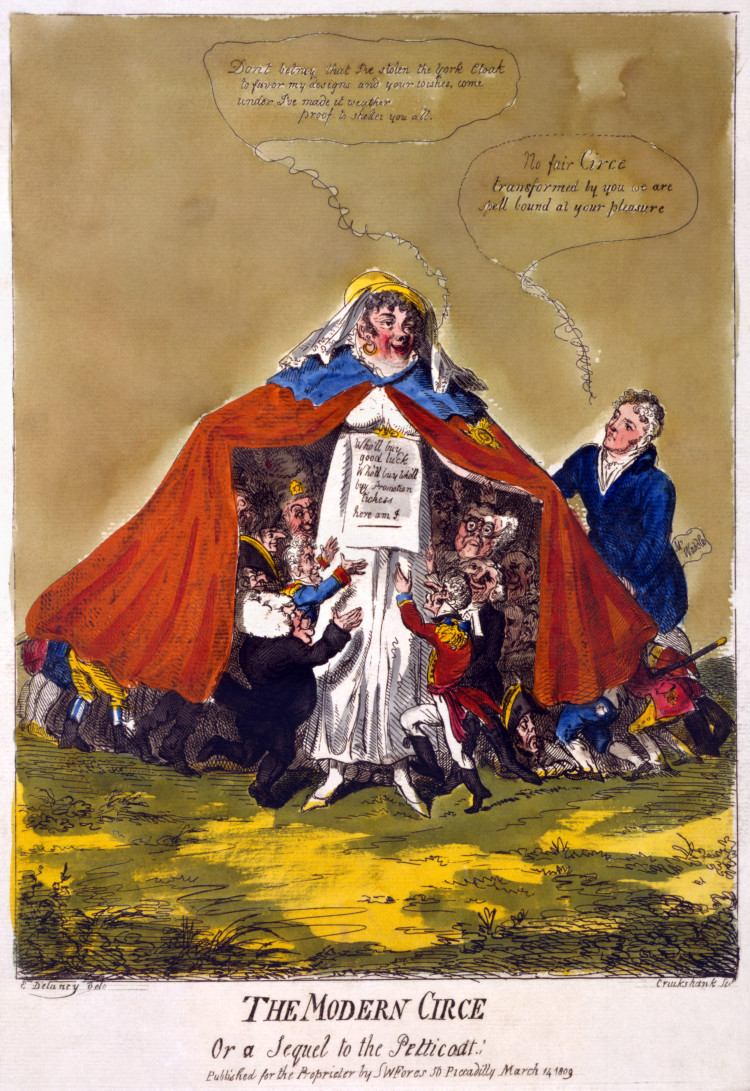Local historian: Exmouth's connection to Mary Anne Clarke, mistress of the Duke of York
By Mike Menhenitt 30th Oct 2022
By Mike Menhenitt 30th Oct 2022

Mary Anne Thompson was born in London on 3 April 1776, the daughter of a tradesman.
Before she was 18, she married a stonemason called Clarke. Shortly after they married, he became bankrupt and she left him but was pregnant and gave birth to Ellen.
Ellen went on to marry Louis-Mathurin Busson du Maurier. They had a son, George du Maurier (1834 – 1896), the famous caricaturist and Mary went on to become the great-grandmother of the famous novelist Daphne du Maurier who wrote a book about Mary Anne Clarke.
Becoming a courtesan
Mary was both attractive and intelligent, and by 1803 she had become involved in the courtesan world where she became a 'kept woman' by wealthy men, and it was while in this society she attracted the attention of Prince Frederick, Duke of York, the second child of George III.
He was Commander-in-Chief of the Army and brother to the Prince Regent. He was the famous Duke of York immortalised in the nursery rhyme about marching his men up to the top of the hill and then down again, which was really mocking his ineffectiveness at being Commander-in-Chief.
Revenge against the Duke of York
Mary became his mistress and he set her up in a fashionable house, but could not meet the upkeep or their lavish lifestyle which he was subsidising from his civil list income.
They parted in 1805, and he bought her silence with a payment of £10,000 and annual pension of £400. He subsequently cancelled this in 1808 and she sought revenge!
Rumours were abounding at this time of the corrupt practice of the sale of commissions in the army and this was finally given credence by a Major Dennis Hogan, who alleged he had been passed over for promotion because he would not meet Mrs Clarke's financial demands.
The case was taken up in parliament by Colonel Gwyllym Wardle, MP for Okehampton and it led to the resignation of the Duke of York and there was much mockery in society of this episode and many cartoons - one of which is in the museum. He, however, was later reinstated.

Revenge against Wardle
Colonel Wardle became a popular hero in the move against corruption. Mary, who was angry that he had exposed her in parliament, then schemed to get an upholsterer called Francis Wright to sue Wardle for a non-payment of a bill of furniture for her new London home.
He was found guilty and ordered to pay £1,095 for the furniture and £1,194 in legal costs.
He vowed revenge on what he saw as a conspiracy. In 1809, he brought a case against them but he lost and faded from public life, leaving parliament in 1812 in severe financial trouble. He then fled abroad and died in Florence in 1833.
Move to Exmouth
In 1804, Mary had moved to Exmouth and lived at Manchester House, now Chester House which the duke discreetly visited and there is a blue plaque there to see.
Later life, and death
When she left Exmouth she lived in Loughton, Essex and in 1811 she commissioned an Irish sculptor Lawrence Gahagan to do a marble bust of herself which portrayed her as rising from the petals of a sunflower.
It stood in her house between portraits of the Duke of York and Colonel Wardle.
The bust is now in Room 17 of the National Portrait Gallery in London, which bought it in 1965. The room is called Royalty, Celebrity and Scandal!
In 1813, she was prosecuted for libel and imprisoned for nine months. On her release, she went to live in France and died in Boulogne-sur-Mer on 21 June 1852, aged 76.
So ended an adventurous life in which Exmouth played a part!
If you would like to know more please visit the museum's website or you can email Mike at [email protected].
—————
Ed: This article is from Mike Menhenitt's Walking Through Exmouth History series. Use the links below to read previous articles:
Part One: The beginnings of Exmouth, from the Stone Age to the Bronze Age
Part Two: Exmouth in the Iron Age - and the arrival of the Celts
Part Three: Roman coins and Viking raids
Part Four: The impact of the Norman conquest, and how places in Exmouth got their names
Part Five: How Exmouth became a fashionable seaside resort in the 18th century
Part Six: How the docks brought prosperity to Exmouth - and then became the marina
Part Seven: The coming of the railway
Part Eight: Turnpikes, toll houses and inns in Exmouth
Part Nine: Jobs your ancestors had in the town through the ages
Part 10: The town's first museums - and the museum as it is today
Part 11: A horse-drawn fire engine and the history of Exmouth Museum
Part 12: The Rolle family
Part 13: Exmouth's cost-of-living crisis in the 19th century
Part 14: Clapp's Cafe and the development of the town centre
Part 15: The Exmouth woman who fought Napoleon
CHECK OUT OUR Jobs Section HERE!
exmouth vacancies updated hourly!
Click here to see more: exmouth jobs
Share:




